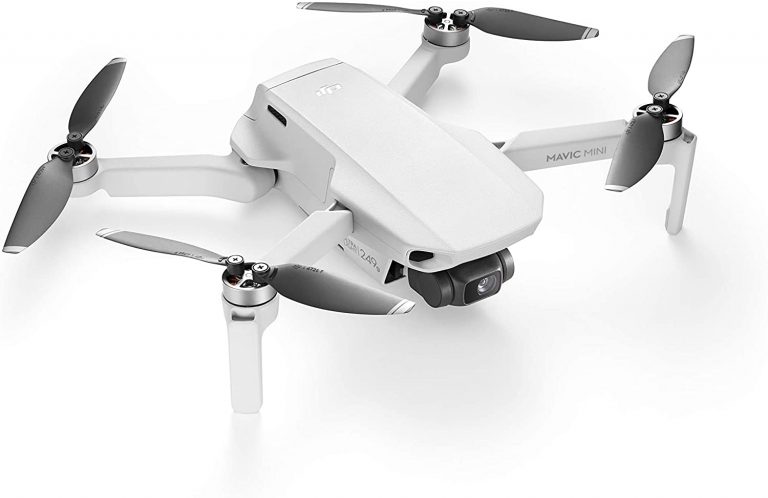However, you will get to see numerous camera drones in the market, but it is somehow difficult for you to find and select incredible camera drones for photography. It is because of their inauthenticity and features. Therefore, I am listing all those best drones for you, which I have experienced. Besides, it becomes pertinent for you to know the features which must be kept in mind while choosing the best photography drone. These features are mentioned one by one.
Sensor and lenses
It is prudent to accept a small size sensor without any zooming lens because it will be lighter than the one that will have a large sensor and zoom lens. So, it will be lighter and will allow you a longer autonomous flight time.
Controlling Centre
It may be a controller that uses radiofrequency, or it should be your phone’s limited range of Wi-Fi. However, it mostly allows your phone to see the live video over it.
Vibration
Regulations
15. DJI Mavic mini

- Weight: 9 oz
- Controller: Yes
- Resolution: 12MP
- Video resolution: 2.7K@FHD
- Battery life: 30 minutes (1 Lithium Polymer))
- Max Speed: 29 mph
- Max Flight Time: 30 min
- Dimensions: 5.5×3.2×2.2 in
- Includes remote control
- Excellent battery life
- Gimbal stabilization
- Automated cinematic footage
- Doesn’t require federal registration
- Lightweight design
- Great image quality
- Omits obstacle detection sensors
- Doesn’t support Raw images
14. Mavic air 2

- Weight: 20.1 oz
- Controller: Yes
- Resolution: 48MP
- Video resolution: 4K@60fps
- Battery life: 34 minutes (3500mAh battery)
- Max Speed: 42.50 mph
- Max Flight Time: 34 min
- Dimensions: 7.4×3.8×3.3 in
- Superlative battery life
- HDR Video, Images & Panoramas
- Automated shots
- Foldable drone
- A strong image and video quality
- 8K Hyperlapse Time-Lapse Video
- AirSense transponder
- Remote omits EV control wheel
13. DJI air 2s

- Weight: 595g
- Controller: Yes
- Camera resolution: 20MP
- Video resolution: 5.4K@30fps
- Battery life: 240 minutes (1 Lithium Polymer)
- Max Speed: 42.50 mph
- Max Flight Time: 31 min
- Dimensions: 7.2×10.0x3.0 in
- 1-inch sensor camera
- Robust safety features
- Automated camera system
- AirSense transponder
- Half-hour flight time
- Perfect shots
- Low internal storage
12. ZeroTech Dobby

- Weight: 199g
- Controller: No
- Camera resolution: 13MP
- Battery life: 970mAh
- Max Range: 100 meters
- Works with Android and iOS
- Small in size
- GPS stabilization
- Automated flying modes
- Return to home functionality
- Highly portable
- Short flight times
- Low-profile propellers
- Shaky & wobbly video
- Expensive
11. Parrot Bebop 2

- Weight: 500g
- Controller: Optional
- Camera resolution: 14MP
- Battery life: 2,700mAh
- Max Range: 300 meters
- Max Speed: 49kph / 30mph
- Stable 1080p video
- Adjustable geofence
- Compact design
- More personalized web experience
- Flight app works with Android and iOS
- FPV goggles included
- So-so video quality
- Limited suburban operating range
- Image distortions
10. Yuneec Typhoon H Plus

- Weight: 1995g
- Controller: Yes
- Camera resolution: 20MP
- Video resolution: 4K @ 60fps
- Battery life: 28 minutes (5250mAh)
- Max Range: 1.6km / 1mi
- Max Speed: 49kph / 30mph
- Dimensions: 520×310mm
- Six rotor design
- Retractable landing gear
- Supports dual-operator control
- Can manage consent preferences strictly
- Rotating 4K video camera
- Provide enhanced functionality
- Solid operating range
- Limited flight time
- Controller is unwieldy
- Very costly
9. PowerVision PowerEye

Photo Credit – PowerVision
- Weight: 3950g
- Controller: Yes
- Camera resolution: 16.1MP
- Video resolution: 4K @ 30fps
- Battery life: 29 minutes (9000mAh)
- Max Range: 5km / 3.1mi
- Max Speed: 65kph / 40mph
- Dimensions (folded): 340×285×296mm
- Dimensions (unfolded): 513×513×310mm
- Solid quality
- Excellent flying
- Stable drone
- Highly portable
- Thermal camera
- No object detection
- Expensive
8. Skydio R1

- Weight: 4000g
- Controller: Phone App
- Camera resolution: 8MP
- Video resolution: 4K @ 30fps
- Battery life: 23-27 minutes (4280mAh dual battery)
- Max Range: 100m (300ft)
- Max Speed: 40kph / 25mph
- Dimensions: 330x406x38mm (unfolded)
- 4K video capture
- Built-in hard drive
- Automatic recording
- Smart Modes
- 360 Obstacle Avoidance
- Doesn’t work in dim light
- Lens shows barrel distortion
7. DJI Inspire 2

- Weight: 4000g
- Controller: Yes
- Camera resolution: 20.8MP
- Video resolution: 5.2k @ 24fps
- Battery life: 23-27 minutes (4280mAh dual battery)
- Max Range: 7km / 4.1mi
- Max Speed: 94kph / 58mph
- Dimensions: 605 diagonal mm
- Magnesium alloy body.
- 5.2K video
- Dual-operator control
- High-speed Sport mode
- Expensive remote controller
- Missing sensors
6. Ryze Tello

- Weight: 80g
- Controller: No
- Camera resolution: 5MP
- Video resolution: 720p
- Battery life: 13 minutes (1100mAh)
- Max Range: 100m
- Max Speed: 29kph / 18mph
- Dimensions: 98x93x41 diagonal mm
- Affordable drone
- Programmable via Scratch
- Automated flight modes
- Easy to fly
- Great flight time
- Limited control range
- Poor quality video
- No GPS
5. DJI Phantom 4 Pro V2.0

- Features of Phantom 4 Pro V2.0:
- Weight: 1375g
- Controller: Yes
- Camera resolution: 20MP
- Video resolution: 4K @ 60fps
- Battery life: 25 minutes (5870mAh)
- Max Range: 7km / 4.1mi
- Max Speed: 72kph / 44.7mph
- Dimensions: 350x350xmm
- Recognizable design
- Very decent camera quality
- Easy to fly
- Quietest drone
- Good operating range
- Bulky design
- No built-in display
- Short battery life
4. DJI Spark

- Weight: 300g
- Controller: Optional
- Camera resolution: 12MP
- Video resolution: 1080p 30fps
- Battery life: 16 minutes (mAh)
- Max Range 100m
- Max Range with controller: 2km / 1.2mi
- Max Speed 50kph / 31mph
- Dimensions (folded): 143×143×55mm
- Good Positioning Systems
- Portable
- Intelligent Flight Modes
- Obstacle Detection Systems
- Multiple Control Options
- Low Wind Resistance
- Short Flight Time
- Dated Camera
3. DJI Mavic 2 Zoom

- Weight: 905g
- Controller: Yes
- Camera resolution: 12MP
- Video resolution: 4K HDR 30fps
- Battery life: 31 minutes (3850mAh)
- Max Range: 8km / 5mi
- Max Speed: 72kph / 44.7mph
- Dimensions (folded): 214×91×84mm
- Dimensions (unfolded): 322×242×84mm
- 2x optical digital zoom lens
- Smooth, sharp 4K video
- Great battery life
- Raw and HDR photos
- Compact design
- High cost
- Could use more internal memory
2. DJI Mavic Air

- Weight: 430g
- Remote controller: Yes
- Camera resolution: 12MP
- Video resolution: 4K 60fps
- Battery life: 21 minutes (2375mAh)
- Max Range: 10km / 6.2mi
- Max Speed: 68kph / 43mph
- Dimensions (folded): 168×83×49mm
- Dimensions (unfolded): 168×184×64mm
- Raw and JPG support
- Automated flight modes
- High bit-rate 4K UHD video
- Good obstacle avoidance
- Asteroid video shot
- Doesn’t support USB charging
- No 4K DCI video
- Panorama stitching needs some work
1. Parrot Anafi

- Weight: 310g
- Controller: Yes
- Camera resolution: 21MP
- Video resolution: 4K HDR 30fps
- Battery life: 25 minutes (2700mAh)
- Max Range: 4km / 2.5mi
- Max Speed: 55kph / 35mph
- Dimensions (folded): 244×67×65mm
- Dimensions (unfolded): 240×175×65mm
- Clever compact design
- 4K video with HDR
- Upward gimbal tilt
- Great obstacle avoidance
- Lightweight to carry
- Straightforward mobile app
- No collision avoidance tech
- Requires smartphone
- The construction feels a little flimsy
- Shorter transmission range














